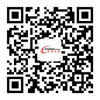Calculating IGBT Driver Output for Optimum Performance
By Markus Hermwille, Senior Product Manager, Semikron International, Hudson, N.H
Today, insulated gate bipolar transistors (IGBTs) have reached a broad penetration in power electronics and are used in many applications such as frequency converters, power supplies and electronic drives. IGBTs have high inverse voltages (up to 6.5 kV) and are capable of switching currents up to 3 kA. One key component of every power electronics system — besides the power modules themselves — is the IGBT driver, which forms the vital interface between the power transistor and the controller.
Selection of the driver and the calculation of the optimum driver output power determine the reliability of the converter solution. Insufficient driver power or the wrong driver may result in module and driver malfunction. By following the procedure outlined here, designers can accurately calculate driver output power to achieve optimum performance of switching IGBTs.[1]
Gate Charge Characterizes IGBT Behavior
The switching behavior of an IGBT module is determined mainly by semiconductor capacitances (charges) and the internal and outer resistances. Fig. 1 shows a sketch of the IGBT capacitances where CGE is the gate-emitter capacitance, CCE the collector-emitter capacitance and CGC the gate-collector capacitance or Miller capacitance. The gate charge is characterized by the CGC and CGE input capacitances and is the key parameter when calculating the output-power requirements for an IGBT driver circuit.
The capacitances are almost independent of temperature but strongly voltage dependent, and as such are a function of the collector-emitter voltage( VCE) of the IGBTs. While this dependency is substantially higher at a very low VCE, it is less noticeable at higher voltages.
When the IGBT is turned on, the gate charge characterizes the behavior of the IGBT. Fig. 2 shows the simplified waveforms of the gate-emitter voltage (VGE), the gate current (IG) and the corresponding collector current (IC) as functions of time from turn-on of the IGBT to its saturation.
The turn-on process can be divided into three stages as seen in the IG = f(t) diagram:
- Charging of the CGE
- Charging of the CGC
- Charging of the CGE until full IGBT saturation
The IG charges the input capacitances, and the VGE and VCE voltages that are dependent of the charging process characterize the turn-on and turn-off behavior of the IGBT. During turn-off, the processes described are running in reverse direction and the charge has to be removed from the gate. To calculate the driver output power, the input capacitances may only be applied to a certain extent due to their nonlinearity. A more practical way of determining the driver output power is to use the gate-charge characteristic.
How to Measure and Determine Gate Charge
By means of a simplified test circuit, the gate charge can be measured. Through a constant-current source (QG = I x t), the gate is driven while VGE is measured with an oscilloscope.[2] The determined gate-charge curve (Fig. 3) can be used to calculate the gate charge per pulse needed to drive the IGBT. The total VGE can be calculated by taking the difference of the applied gate turn-on (VG(on)) and turn-off voltage (VG(off)) into account.
The graph in image 3 of the IGBT data sheets shows the gate-charge curve in the positive and negative quadrants. If the gate-charge curve is given in the positive quadrant only, the gate-charge amplitude can be read out by extrapolation. Even in the case where no gate-charge curve is available the gate charge can be determined by means of a less accurate method using the input capacitance CIES = CGE + CGC.[3]
Driver Output Power and Gate Current
The individual power of the trigger circuit needed to drive the IGBT can be found as a function of the intended switching frequency and the energy that has to be used to charge and discharge the IGBT. The driver output power (PGD(out)) is the electrical energy (E) times the switching frequency (fSW):
PGD(out) = E x fSW.
Here, E is the product of the gate charge and the difference of the turn-on and turn-off voltages:
E = QG x (VG(on) - VG(off)).
Therefore, driver output power is dependent on gate charge, turn-on and turn-off voltages and the switching frequency:
PGD(out) = QG x (VG(on) - VG(off)) x fSW.
Another key requirement for IGBT driver circuits is that enough current can be supplied to charge and discharge the input capacitances of the IGBT and thus to switch the IGBT on and off. This gate current can be calculated using the equations for IGBT input-capacitance charging (Fig. 4). The gate current calculated is the minimum average output current of the driver output stage per channel:
IG = IGE + IGC = QG x fSW.
The IGBT switching time is controlled by charging and discharging the gate of the IGBT. If the gate peak current is increased, the turn-on and turn-off time will be shorter and the switching losses reduced. This obviously has an impact on other switching parameters such as overvoltage stress, which have to be watched.
The gate-charge currents can be controlled by the turn-on and turn-off gate resistors (RG(on) and RG(off), respectively).[4] The theoretical peak current can be easily calculated IGPEAK=(VG(on) - VG(off))/(RG+RG(int)). Here, the IGBT module's internal gate resistor RG(int) must be taken into account. In practice, stray inductance reduces the peak value below the possible theoretical value. In the data sheet of an IGBT driver, a maximum peak current is given, as are the minimum values for the gate resistors. If both these maximum and minimum ratings are exceeded, the driver output may be harmed as a result.
IGBT Driver Choice
Selecting the suitable IGBT driver requires a few considerations. The maximum average output current of the driver must be higher than the calculated value and the maximum peak gate current of the driver must be equal to or higher than the maximum calculated peak gate current. The output capacitors of the driver must be able to deliver the gate charge needed to charge and discharge the gate of the IGBT.
When selecting a suitable driver, the maximum charge per pulse as listed in the driver data sheet must be duly considered. The selection of a suitable driver, regardless of the application, can be easily accomplished by using the tool DriverSel. DriverSel is a free software tool available at www.semikron.com that, based on the aforementioned characteristics and equations, calculates suitable IGBT drivers on the basis of the IGBT module selected, the number of paralleled modules, the gate resistor, the fSW and VCE. This tool can be used for driver calculation and selection of any brand and IGBT package, as well as to calculate the necessary gate charge and average current.[5]
References
- Hermwille, M., "Plug and Play IGBT Driver Cores for Converters," Power Electronics Europe, Issue 2, pp. 10-12, 2006.
- IEC 60747-9, Ed.2: Semiconductor Devices – Discrete Devices – Part 9: Insulated-Gate Bipolar Transistors (IGBTs).
- Hermwille, M. IGBT Driver Calculation, Application Note AN-7004, SEMIKRON International.
- Hermwille, M. "Gate Resistor – Principle and Application," Application Note AN-7003, SEMIKRON International.
- SEMIKRON International, www.semikron.com.
For Further Reading
- 1. SEMIKRON International, Application Manual Power Modules.
- Bhosale, P., Hermwille, M., "Connection of Gate Drivers to IGBT and Controller," Application Note AN-7002, SEMIKRON International.
编辑:ronvy
http:www.cps800.com/news/2008-10/20081028162928.html



